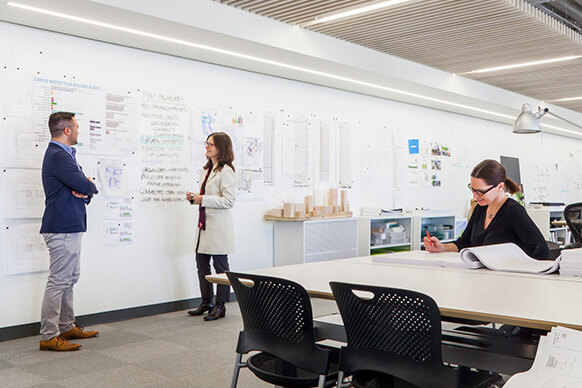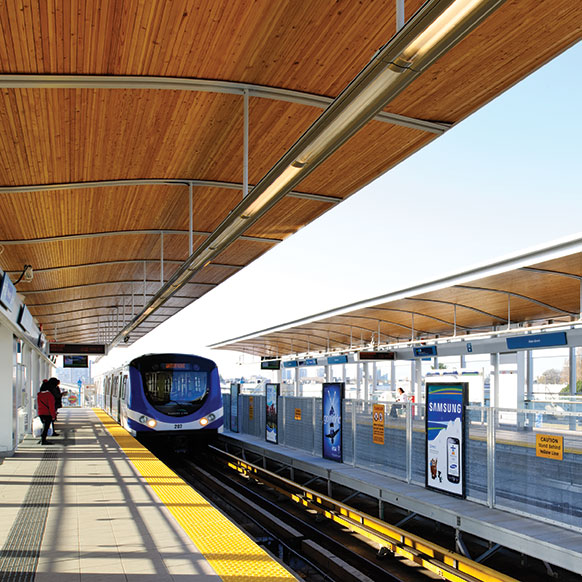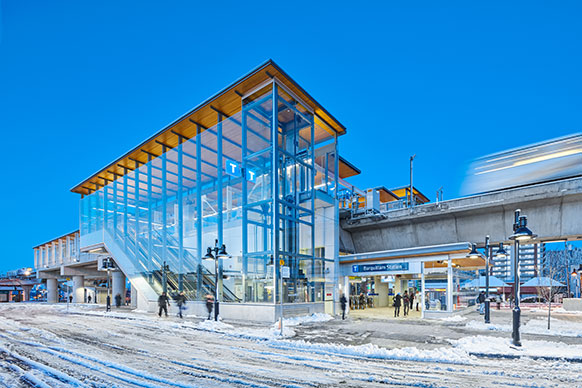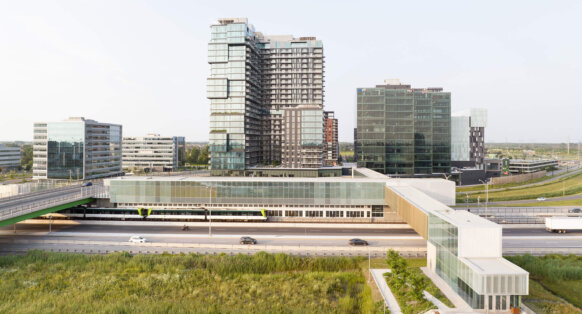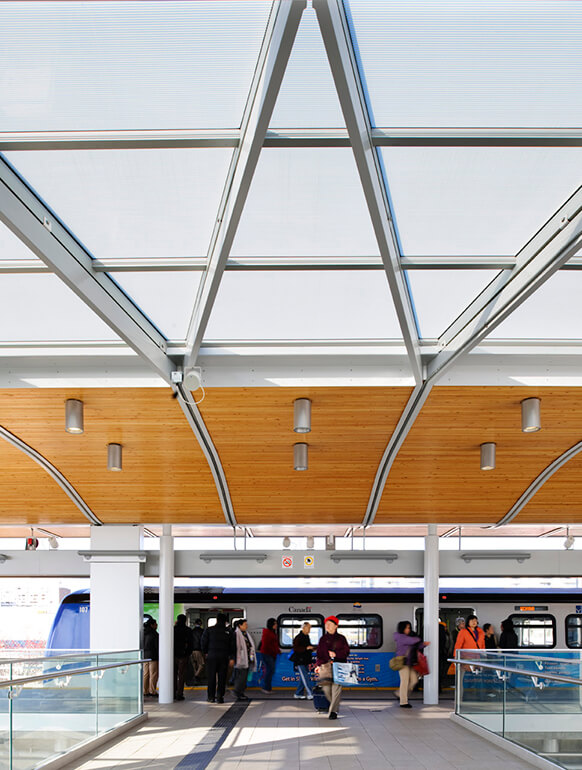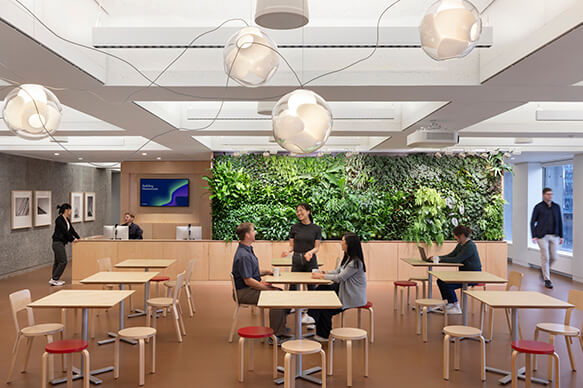Beyond the Drawing Board
Using an internal research grant, we led a post-occupancy evaluation of the transit stations on the then five-year-old Canada Line. The study examined a range of factors including: passenger experience, operations and maintenance, urban realm integration, environmental impact, and economic impact. Through this study, we were able to ask ourselves two important questions: were the stations we designed for the Canada Line performing as intended, and what can we learn from observing the way people use the stations on a daily basis?
The study not only looked at the three stations designed by our team, but also other stations along the line, and included different station typologies, such as elevated and underground. The results indicate many successes in the design of these spaces and their intended usage. The report also notes some design elements that could benefit from further refinement and other results—such as higher than expected usage at some stations—that emphasize the importance of pre-design work and data upon which we base our design.
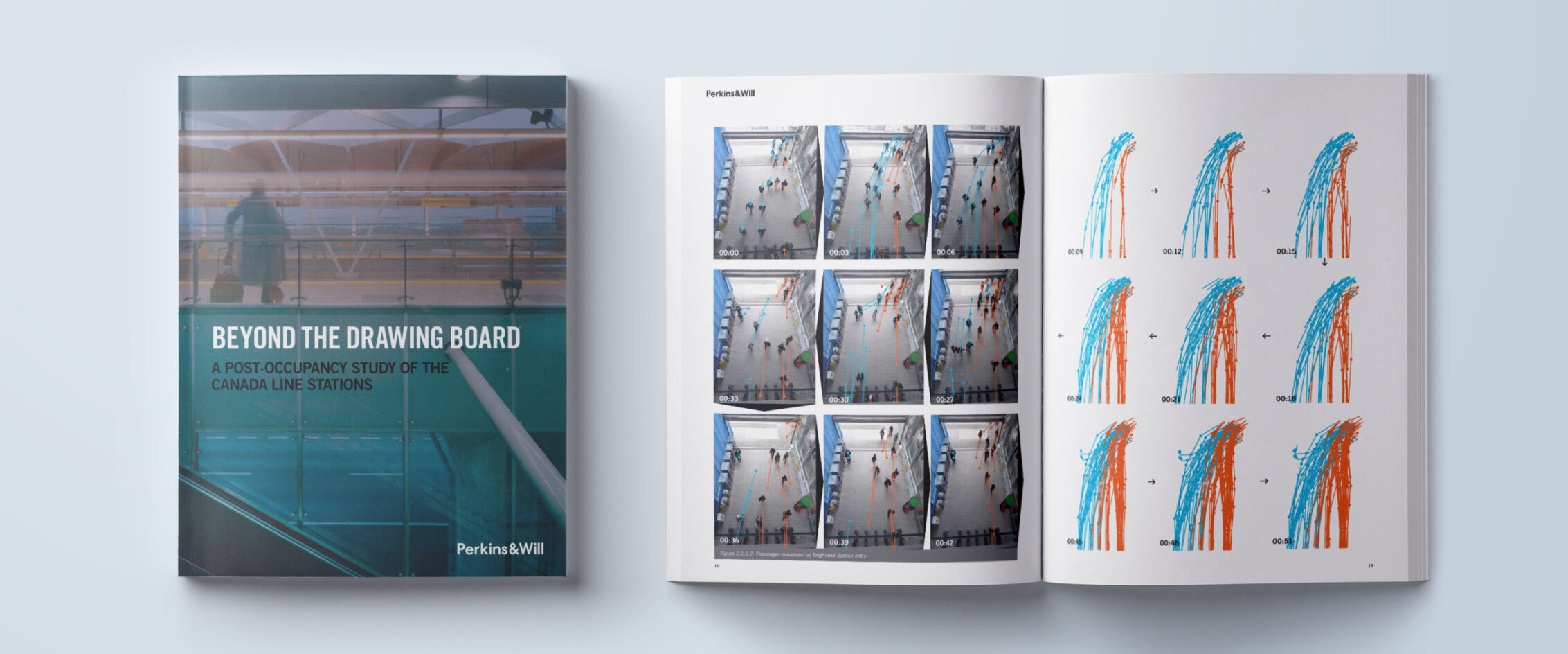
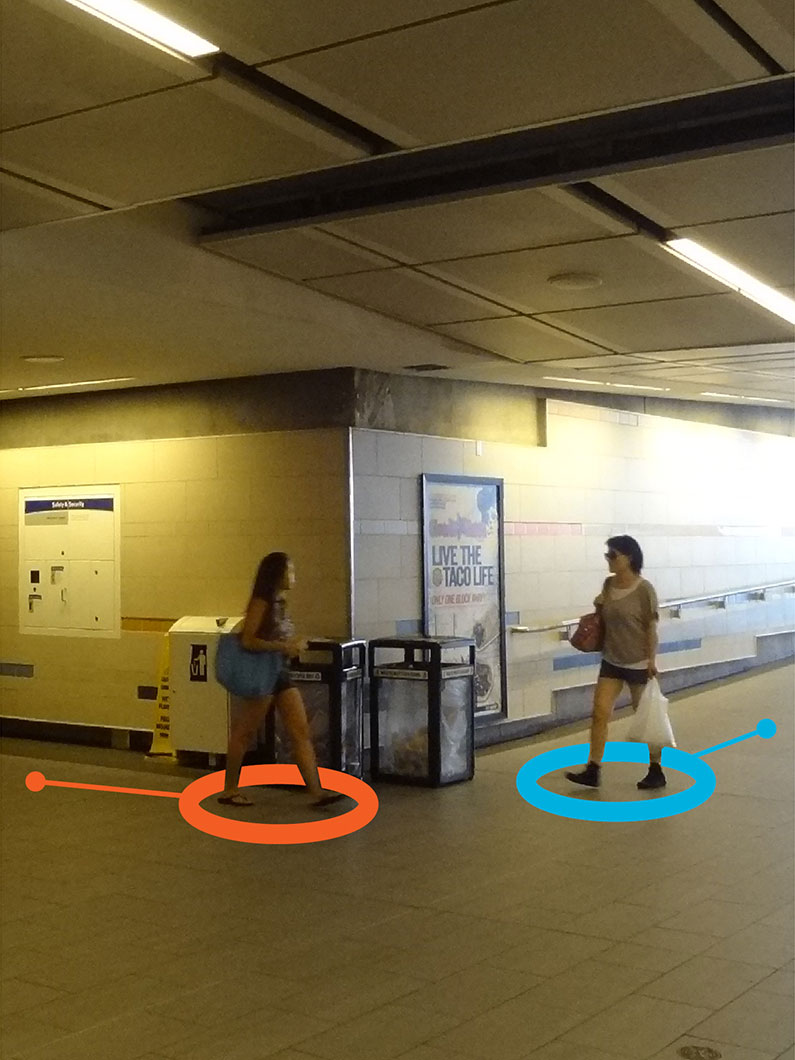
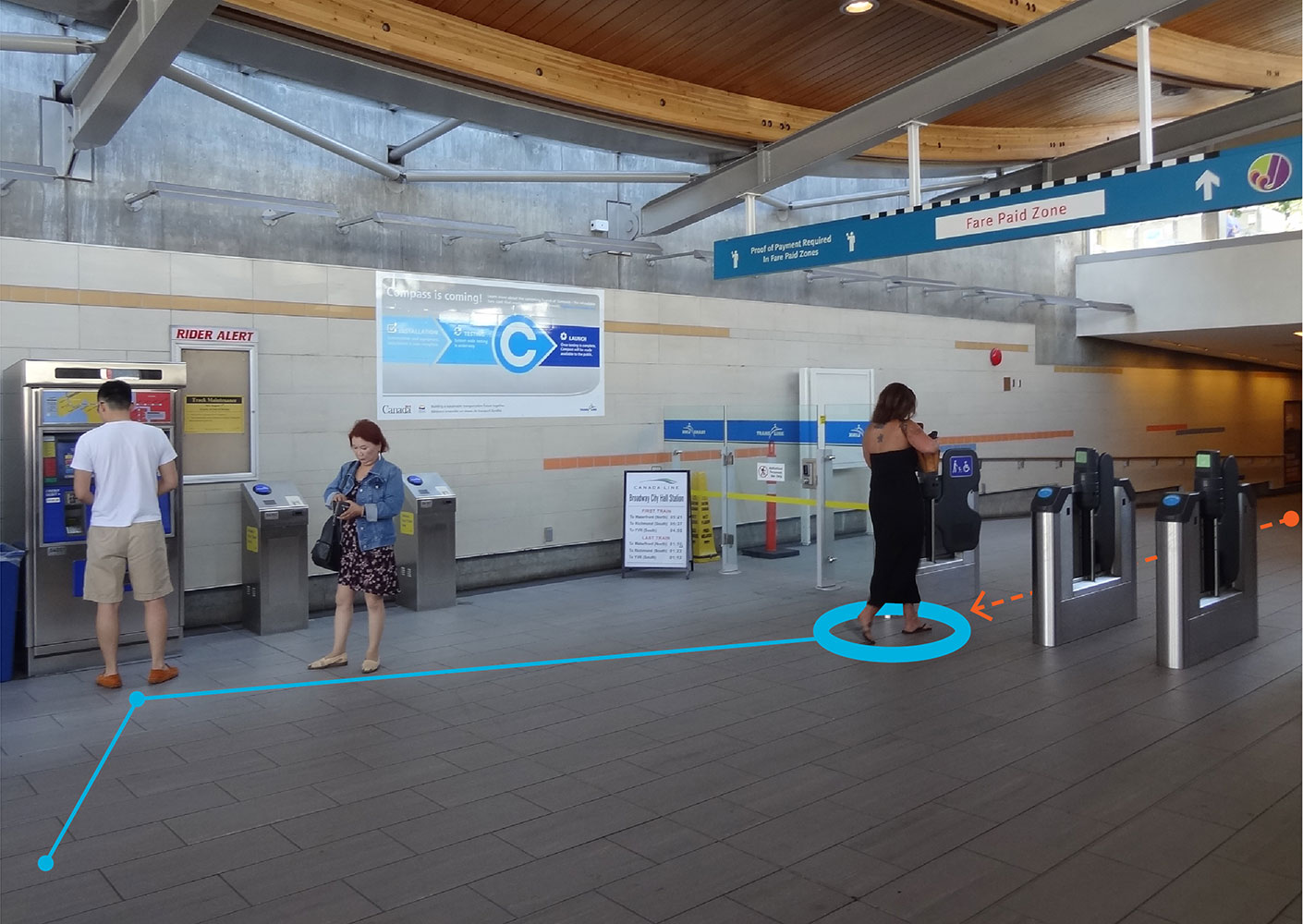
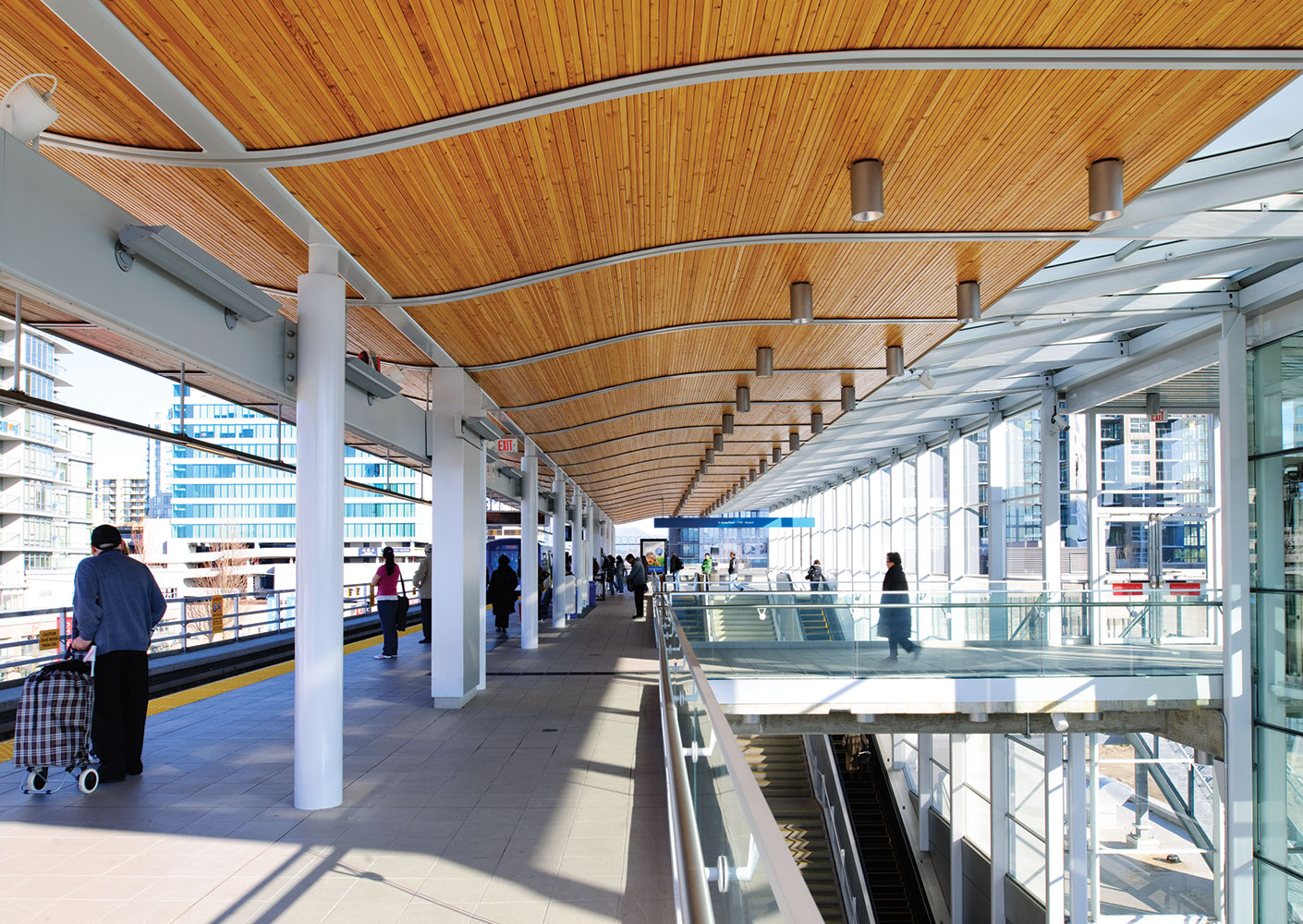
Architecture has the unique ability to connect people to people, and people to places. Creating spaces that people and communities care about and appreciate is the first step in producing a meaningful urban environment. As designers, we are constantly forming and testing ideas about how design can improve the lives of the people in our communities. A critical step in our design process is taking the time for reflection at the end of a project to under-stand what has been successful. Through gathering information from the life of the building, we are able to continually improve future designs.

